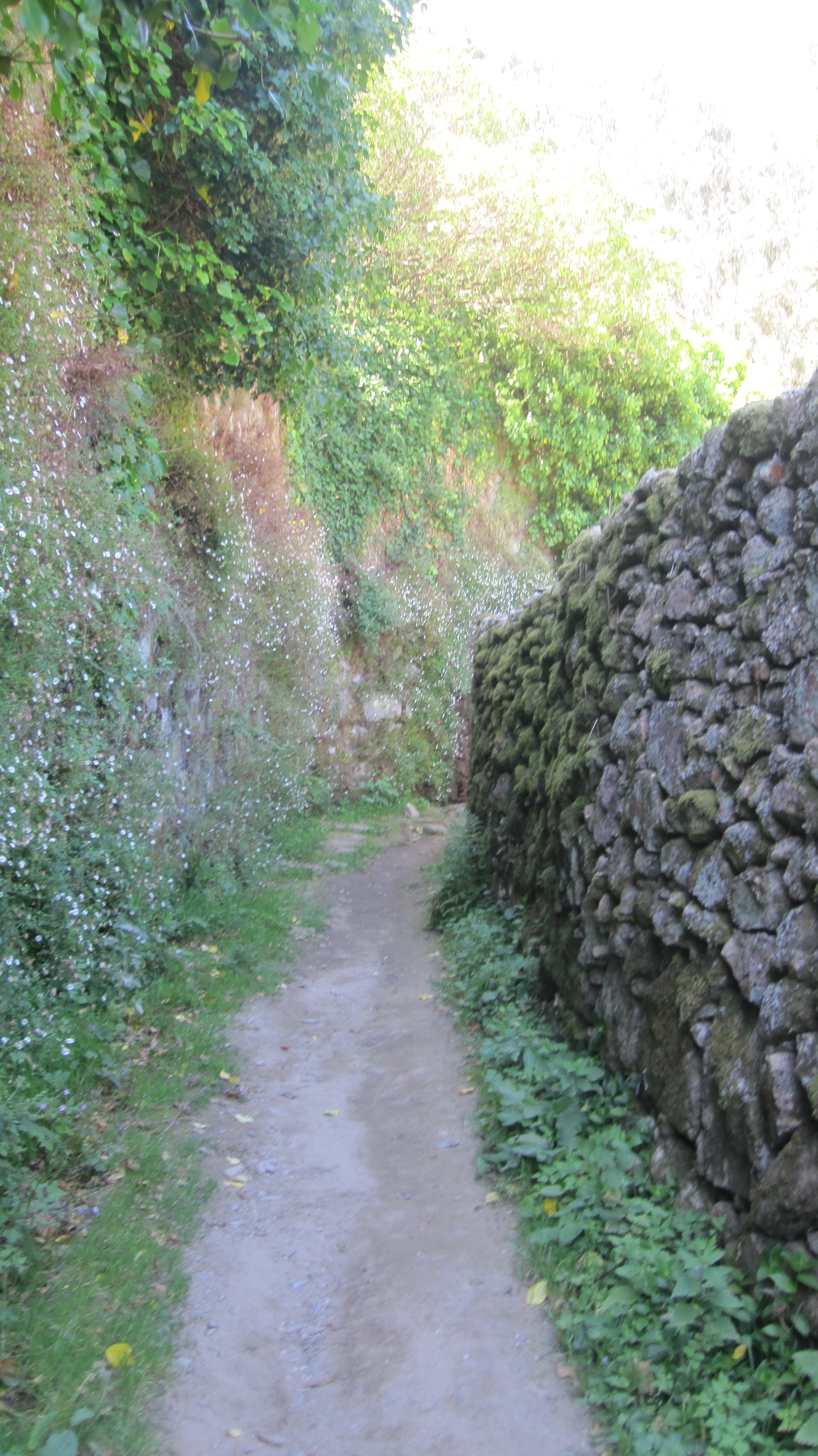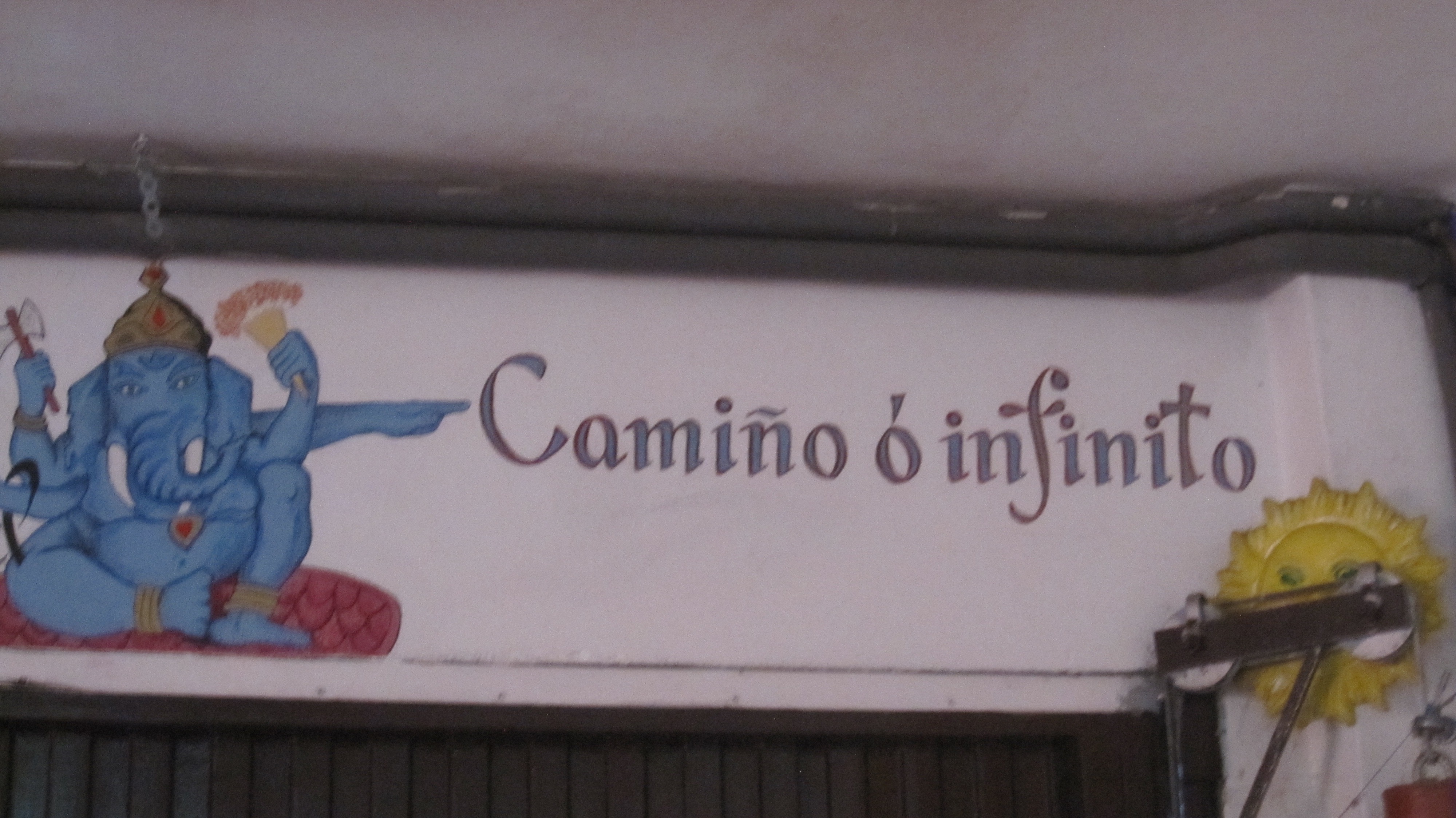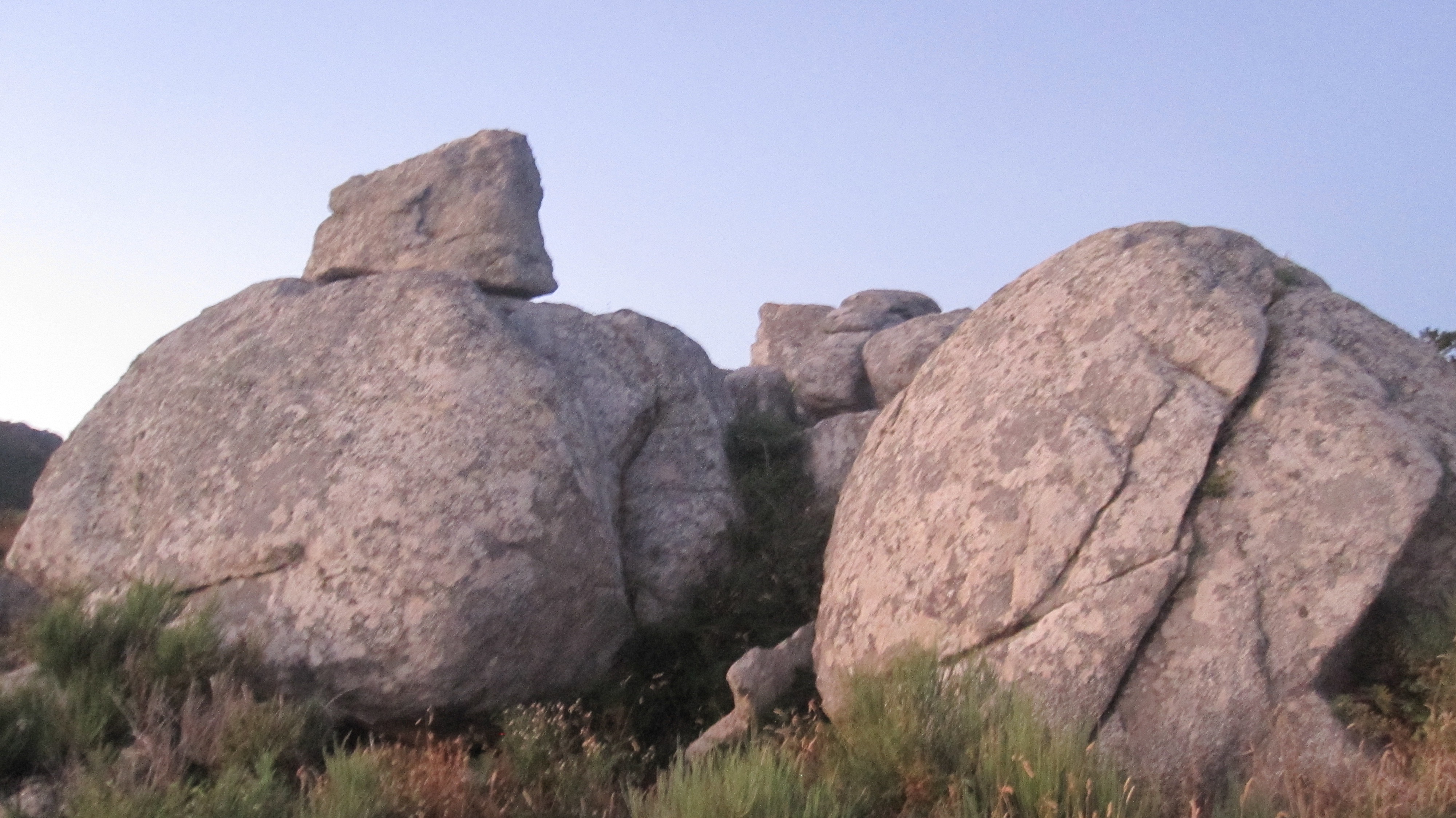In Celtic times and even before, Cape Finisterre was considered the “end of the world” and a major cultic place. Often the medieval pilgrims continued their pilgrimage to Cape Finisterre.
At the coast, they collected the scallop as evidence that they had walked the entire Camino to the end of the world. Five years ago, I walked that extra 54 miles with my daughter. This time I only hiked the last eight miles to Fisterre.
People helping a pilgrim to find the way
More old stone walls
Soon I walked along the coast and had a spectacular view to Cape Finisterre and the town Fisterre.
View of the “end of the world”
Typical Galician stone cross
I chose to stay at the albergue Do Sol. It was the same place I stayed in five years ago.
It had not lost its charm and warmth.
One of many writings in the albergue
Poster in the albergue Do Sol
Cape Finisterre is half an hour walk away from town. Many pilgrims go there to watch the sunset. After two weeks of bad weather, the atmosphere was clear and brilliant. The sun was visible until it disappeared at the horizon. It looked as if it was sinking into the ocean. Everybody was watching it in silence.
Until recently, it was a tradition to burn a piece of clothing or shoes near the light tower. However, after the whole hill caught fire one time, the tradition was forbidden, but not everybody is following this law – I saw the leftovers of some recently burned shoes.
Light tower
Granite boulders on the Cape










